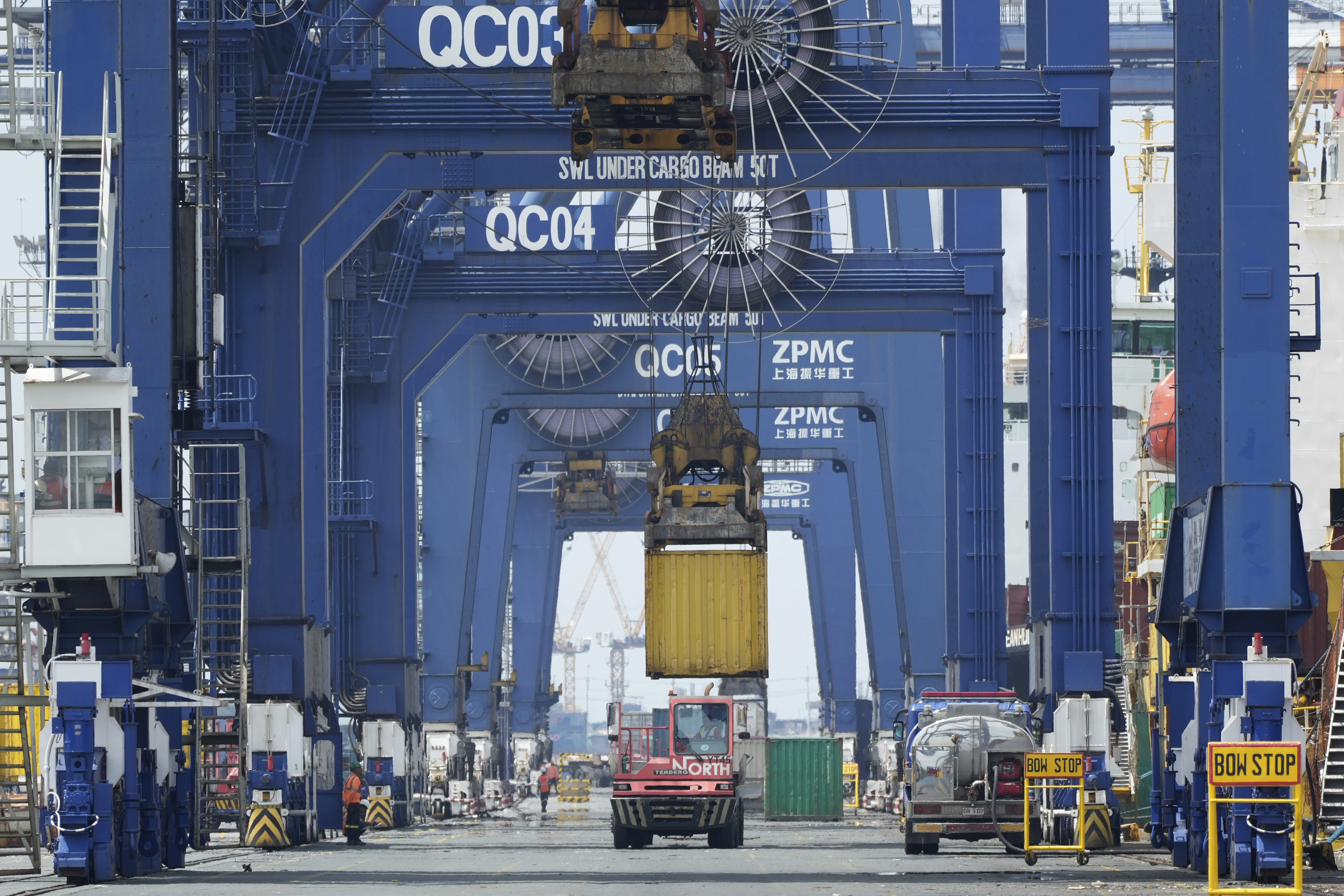Latest AMRO report forecasts GDP to ease to 4.1 percent this year amid US tariffs, rising protectionism

Washington’s increased tariffs and rising protectionism will weigh down on the growth of the members of the Association of Southeast Asian Nations and three East Asian economies (ASEAN+3), with regional GDP growth this year seen to ease at 4.1 percent, a regional think tank said.
The Singapore-based ASEAN+3 Macroeconomic Research Office (AMRO) said in its latest ASEAN+3 Regional Economic Outlook (AREO) on Oct 9, that the 2025 GDP forecast marks a slowdown in ASEAN+3 growth from 4.3 percent in 2024.
AMRO said the deceleration is sharper in ASEAN, where growth is projected to ease to 4.6 percent in 2025, from 4.9 percent in 2024. The three East Asian economies — China, Japan, and South Korea — are expected to grow this year by 4.8 percent, 1.0 percent, and 0.9 percent.
AMRO also sees the export-oriented corporate sector facing pressures on profit margins owing to shifting trade dynamics. The higher tariffs are also seen to put inflation pressures in the US, while a growing uncertainty around the US dollar’s safe-haven status is also expected to fragment the global financial landscape.
ALSO READ: Tariff turbulence propels ASEAN rethink
While several ASEAN+3 economies have concluded negotiations with the United States and have succeeded in reducing the initial tariff rates that US President Donald Trump has threatened to impose against its trading partners, trade policy uncertainty remains the “number one risk” to ASEAN+3 economies, according to He Dong, AMRO ‘s chief economist.
He said if the world’s major economies can continue to grow despite the tariffs, then the demand for ASEAN+3 exports will remain steady.
“We still want to caution against any complacency, because trade policy uncertainties are still high and financial markets can also become more volatile,” He said in the hybrid webinar on Oct 9.
Some ASEAN economies — like Vietnam and Cambodia — are also facing significant challenges, owing to their huge exposure to US markets, according to He.
“When we think about exposure to the US markets, Cambodia and Vietnam stand out,” He said, noting that it’s important for Vietnam to diversify export markets, upgrade its industrial structure to increase the domestic value added of exports.
ALSO READ: ASEAN says tariffs unfair, pose threat to free trade
He added that the conflict over the Thai-Cambodian border will also hamper the inflows of workers’ remittances and Thai tourists into Cambodia, which will further pressure the Cambodian economy.
For Japan, one of its immediate challenges is balancing the commitment to fiscal discipline to keep public debt in check, without sacrificing growth momentum, according to Runchana Pongsaparn, AMRO’s group head for financial surveillance.
“Top of mind for people (in Japan) is the cost-of-living issue, as well. So, how to balance the fiscal discipline with fiscal support to support growth, and then at the same time address the cost of living issue?” Runchana said.
Runchana said central banks in the ASEAN+3 region have used several tools to manage the conditions in the domestic economy. She said benign inflation, the weak US dollar, and the Fed rate cuts have allowed central banks in the region to ease monetary policy further.
READ MORE: ASEAN vows further regional integration
“We have seen some evidence over the past few years that central banks in the region have used foreign exchange intervention as another tool to deal with excessive volatility or rapid movement in the exchange rate. So, they are able to do that while at the same time supporting growth using monetary policy,” Runchana said.
Abdurohman, AMRO’s deputy director for functional surveillance and research, said ASEAN+3 is “in a strong position to weather these challenges”.
He said most of the economies in the region have a solid economic buffer, including adequate foreign exchange reserves, a well-capitalized banking sector, and a healthy corporate and household balance sheet.
Abdurohman also noted that inflation across the region remains modest, giving more room to central banks to adjust their monetary policy to support growth if needed.
He said regional cooperation continues to be a key source of strength for ASEAN+3.
“The mechanism of financial support, and also policy coordination, enhances our collective resilience and enables better coordinated policy to respond to external shocks,” Abdurohman said.


